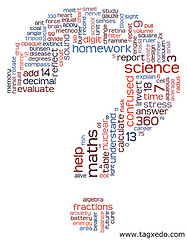Planned, Purposeful Activities
By Mary Bigelow
Posted on 2015-12-30
 My fifth grade students get excited about hands-on activities, but sometimes they use an activity as a reason to socialize or joke around. Sometimes the class appears chaotic. I’m looking for ideas on what I can do to make sure this is a good use of time for students to learn. —F., Arizona
My fifth grade students get excited about hands-on activities, but sometimes they use an activity as a reason to socialize or joke around. Sometimes the class appears chaotic. I’m looking for ideas on what I can do to make sure this is a good use of time for students to learn. —F., Arizona
As you have observed, most students enjoy working together on investigations, projects, and activities. This excitement can get out of control, which leads to safety issues as well as students not meeting the learning goals for the activity…and perhaps the chaos that you mentioned.
Part of the issue could be addressed by classroom routines and planning, but a more fundamental thought is whether students understand the purpose of these activities and how they relate to learning.
If your students’ previous science experiences were based on worksheets or teacher-led demonstrations, they might view “fun” activities as a special event or reward for doing the worksheets, rather than an integral and essential part of learning. They also might need guidance on working cooperatively and safely.
Students should be aware of how an activity contributes to the learning goals or performance expectations. Take a few minutes to introduce or describe the activity in that context. Students will be more engaged if they have a personal ownership in the activity.
If activities are an integral part of instruction, they should not be a reward for good behavior (“Since you were really well behaved at lunch, we’ll do an activity today”) or taken away for unrelated poor behaviors (“You were noisy in the cafeteria, so no lab for you”). Some teachers have a no homework-no lab policy, but unless the homework was a preparation for the lab, this is not something I would recommend.
Doing an activity without any kind of follow-up or reflection may also contribute to students’ attitudes. My students seemed to take the activities more seriously when a “product” was required—a lab report, notebook entry, summary, photographs or video, drawing, data chart, graph, or exit slip.
In order to use class time efficiently and safely, it’s essential that you and the students have routines and procedures in place. Here are some from NSTA’s email lists and discussion forums:
- To reduce the drama of choosing partners, assign students to groups, with a promise that at some time you’ll change them. Designate a space for each team to work on activities.
- To minimize students roaming around, one of the roles in cooperative groups could be that of “coordinator” whose job is to get the materials for the activity.
- Monitor the time. Students need time to not only clean up but also to pack up their thinking. Don’t dismiss the class until the room is cleaned up and the materials are accounted for.
- Never leave the room or use this time for your own paperwork. Mingle with the groups and monitor student behavior. Use time to talk with each group, note student skills on a checklist, or ask students to describe what they’re doing and learning.
- Have a zero tolerance for unsafe behaviors. If student behaviors get out of control or become unsafe, stop the activity.
Planning and organization are also important. In your mind, go through the activity and focus on what the students should be doing to accomplish the task in an orderly and timely fashion. Can the activity be completed in one class period, or will students need to continue at another time? What is in place for students who finish ahead of time? What accommodations might be necessary for special needs students? Review any safety issues that may arise.
Have a labeled box or tray for each lab group to make it easier to organize the materials. Have these ready ahead of time for the coordinators to pick up. Include an index card in each box with an “inventory” so that at the end of the period, students knew what is to be returned. Save the cards to use the next time you do the lesson. Even though you’ll discuss any safety issues prior to the activity, you could put a summary on the card as a reminder.
As you mingle and monitor, you may find yourself spending more time near the groups who need your attention. Use an agreed-upon signal for quiet if the noise becomes distracting or chaotic. You’ll eventually learn to distinguish between off-task noise and the sounds of excited learning—the best sound ever!
Disclaimer: The views expressed in this blog post are those of the author(s) and do not necessarily reflect the official position of the National Science Teaching Association (NSTA).


